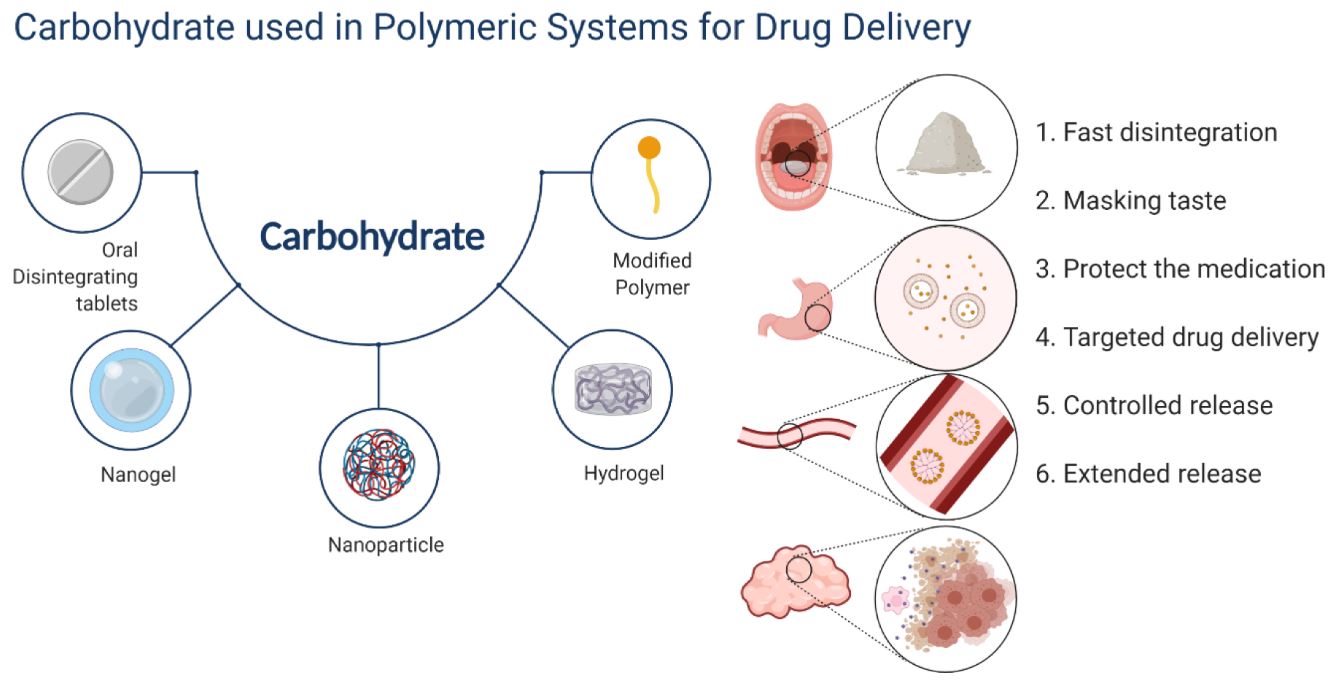Carbohydrates Used in Polymeric Systems for Drug Delivery: From Structures to Applications

Abstract
Carbohydrates, one of the most important compounds in living organisms, perform numerous roles, including those associated with the extracellular matrix, energy-related compounds, and information. Of these, polymeric carbohydrates are a class of substance with a long history in drug delivery that have attracted more attention in recent years. Because polymeric carbohydrates have the advantages of nontoxicity, biocompatibility, and biodegradability, they can be used in drug targeting, sustained drug release, immune antigens and adjuvants. In this review, various carbohydrate-based or carbohydrate-modified drug delivery systems and their applications in disease therapy have been surveyed. Specifically, this review focuses on the fundamental understanding of carbohydrate-based drug delivery systems, strategies for application, and the evaluation of biological activity. Future perspectives, including opportunities and challenges in this field, are also discussed.
Introduction
A polymer is a substance composed of macromolecules whose structure is composed of multiple repeating units. Because polymers contain a variety of functional groups, they can be blended with other high- and low-molecular-weight materials to impart unique functional properties, be conjugated with some drugs, and can be tailored for any application. Similar to other polymers, carbohydrates have many active groups. The general formula of carbohydrates is Cx(H2O)y, which has a carbonyl, an aldehyde or a ketone. When monosaccharides dissolve in solution, they exist as pyranose or furanose, and acquire an asymmetric center called “anomeric carbon”. The hydroxyl group on anomeric carbon forms a glycosidic bond for a polysaccharide or a glycan chain in the α-/β-configuration with the hydroxyl group. Simultaneously, amidogen and/or hydroxyl groups at other sites can be further modified to obtain desirable physical and chemical properties. As natural macromolecules and biologically active substances, as shown in figure above, carbohydrates play a very important role in polymeric drug delivery systems. This review will focus on carbohydrate-based and carbohydrate-modified polymeric systems for drug delivery. It will specifically focus on the preparation of targeted polymers, the synthetic method for modifying polymers by carbohydrates, and applying the materials in drug delivery systems.
Download the full research paper as PDF: Carbohydrates Used in Polymeric Systems for Drug Delivery From Structures to Applications
Carbohydrates analysed in the paper for their drug delivery application: Starch, Cyclodextrins, Xanthan gum, Gellan gum, Pullulan, Chitosan
Di, X.; Liang, X.; Shen, C.; Pei, Y.; Wu, B.; He, Z. Carbohydrates Used in Polymeric Systems for Drug Delivery: From Structures to Applications. Pharmaceutics 2022, 14, 739. https://doi.org/10.3390/pharmaceutics14040739

